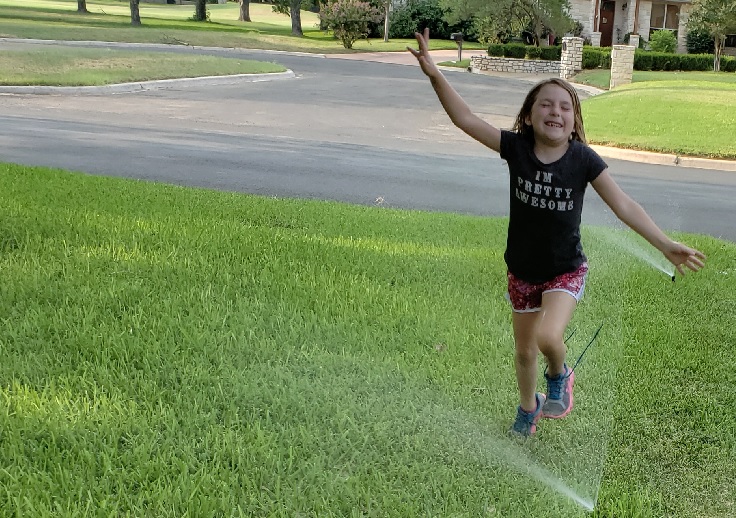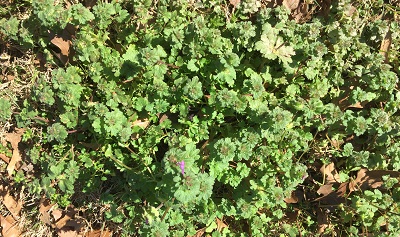Lawn Irrigation
Most of us cringe when asked how much and how often we should water our lawns. Well, cringe no more!
There is a very simple way to determine how long to run our lawn irrigation, and a simpler way to determine how often to run it! Better yet, once you determine the “magic number”, you will not have to do it again! (I know that most people pick a “magic number” out of the sky to determine how long your sprinkler will run.)
No more guesswork! Each lawn has different soils and different irrigation systems. We cannot treat them all the same!
The method I am going to describe is called an “Irrigation Audit”. It is often used when lawns have dry patches that cannot be explained by insects or disease. Here is how it is done:
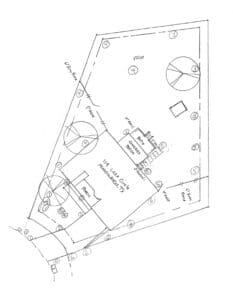
*Trace a copy of a survey of your yard. You can mark where the irrigation heads are and number them by zone if you wish. This will also give you and idea of how many heads are in each zone, which can affect the water pressure and the volume of water applied.
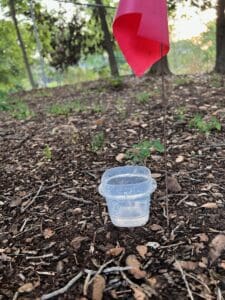
*Place several cans or cups (that will not tip over) in several places on your lawn. If you have dry patches, place some there, and place some in the green areas as well. Mark each area that you placed a container on the copy of the survey.
*Run your irrigation on the normal day and time that you are used to watering, for the normal length of time.

* Measure the water collected in each cup. Write the amount of water collected in each cup next to each mark on your survey map.
This cup only has about 1/2″ of water in it.
*Compare the results. This will tell you if your irrigation is reaching each area equally. If not, it is time to make some adjustments! This could also explain those dry, brown areas!
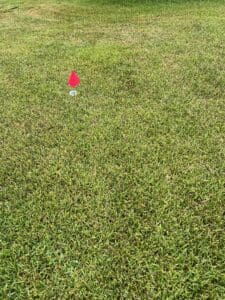
The area that only received 1/2″ of water is lighter green than the rest of the lawn.

I can barely get the shovel to enter the soil! This area really needs more time on the clock!
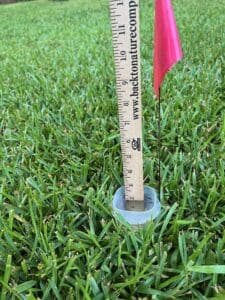
Wow! This cup has collected almost 2″ of water. Notice that the grass is dark green in this area.

*Next, using a shovel or a trowel, dig down next to each cup to see how far the water has percolated. Push the shovel down as far as you can and push the handle away from you to look down the back side of the shovel.
This shovel pushed in about 8″ deep and the soil was wet all the way down.
This tells me that I can run this zone for about half the time that it is currently running if my goal is 1″ of water.
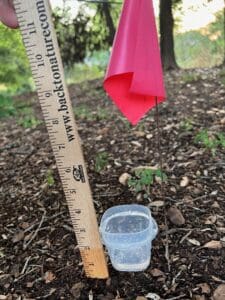
This area only received 1/4″ of water. No wonder there is no grass growing here!
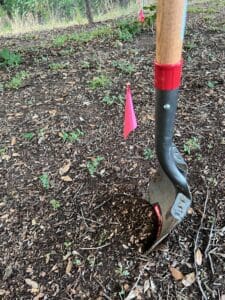
The shovel would only go about 2″ deep in this area. I can see that I will need to increase the time on this zone!
Different soils percolate at different rates, and each sprinkler zone may deliver varying amounts of water. So, this information will be quite useful when determining how long to run your irrigation. Your goal is to have the water percolate 6” deep, which usually averages about 1″ of water.
(I am hoping and assuming that you have 6” of soil under your lawn!)
*Calculate how long your irrigation system would need to run to wet the ground to a depth of 6”. If you watered for 20 minutes and collected ½” of water that percolated down just 3”, you could estimate that the irrigation would need to run for 40 minutes to collect 1” of water and percolate 6”. (This is just an example. Each situation will be unique.) Test your new estimated irrigation time on your next watering cycle to confirm. Make adjustments if needed. You now have a “tested” run-time for your sprinklers!
*OK. So how often should you water your lawn? In a perfect world, without watering restrictions, you would use the powers of observation to determine when to water your lawn. Research has shown that lawns develop deeper, healthier root systems when allowed to reach their “threshold” or stress point. In St. Augustine grass, this is seen as the leaf blades folding lengthwise. This is the point at which St. Augustine should be watered to a depth of 6”. Bermuda grass has reached its stress point when a footprint will not “bounce back” and remains indented in the lawn! Again, water the lawn to a depth of 6” at this time.
*With water restrictions in place, it becomes even more important to water efficiently and deeply when we do water. With a deeper root system, your lawn will have a better chance of surviving drought and the cold in winter. As you can imagine, frequent, shallow watering of lawns produces shallow root systems. Shallow root systems will not tolerate drought or cold, and are more susceptible to weed infestation.
I hope this has helped you understand how you need to water your lawn so that it will not just survive, but actually THRIVE!

